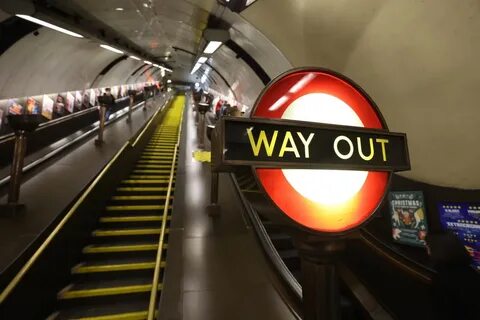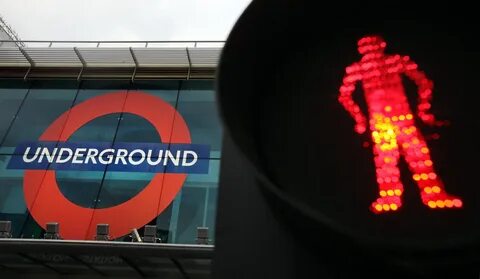Tube strikes are a prime trouble in cities like London, wherein public transportation is critical to daily lifestyles. They disrupt travel, have an effect on businesses, and often purpose public frustration. But what are tube strikes, and why do they manifest so frequently? In this text, we’ll wreck down the whole thing you want to recognize about tube strikes, from their causes to their impact on the general public, along side pointers for navigating those disruptions.
What Is a Tube Strike?
A tube strike is a form of protest by way of subway (or “tube”) employees who stop operating to voice their dissatisfaction with running conditions, wages, or policies. Typically prepared with the aid of unions, those strikes deliver services to a halt or reduce them considerably, aiming to press management and transport authorities to cope with workers’ concerns. Tube strikes are maximum not unusual in larger cities in which underground delivery is a primary mode of commuting, making their impact widely felt across the populace.
History of Tube Strikes
The records of tube strikes stretches lower back decades, with each one reflecting ongoing tensions among shipping employees, their unions, and control.
Early Strikes and Their Impact
The earliest tube moves date returned to the early 1900s when people commenced organizing for honest wages and affordable hours. These initial strikes, though infrequent, regularly had considerable effect due to the limited availability of alternative transportation at the time. As the underground community grew, so did the need for organized exertions efforts to ensure safe and truthful running conditions.
Major Strikes in Recent Years
In recent years, numerous major moves have made headlines, which include full-size stoppages in 2010, 2015, and 2022. Each of these moves lasted more than one days, with lengthy-time period implications for each the general public and the shipping system. Issues which include salary freezes, proposed job cuts, and changes in working hours have driven these actions, with unions leveraging moves to focus on employee concerns.
Reasons Behind Tube Strikes
Understanding the motives at the back of tube strikes is fundamental to grasping their frequency and effect. Most moves center round wage disputes, safety issues, and technological shifts.

Wage Disputes and Working Conditions
Wage disputes are a primary reason of tube moves. With growing expenses of living, employees demand wage increases or additional advantages to make ends meet. Poor running conditions, which includes lengthy hours or constrained breaks, also make a contribution to employee dissatisfaction and the preference for alternate.
Safety Concerns
Safety is every other important aspect. Unions regularly endorse for higher safety protocols, specially concerning overcrowded stations, emergency preparedness, and system preservation. Employees demand stricter standards to protect both themselves and the public, specifically in busy urban transit structures.
Disputes Over Automation
The push closer to automation, which include the capacity use of driverless trains, has led to unrest among tube workers. Many worry activity losses or decreased duties as technology advances. Strikes in reaction to automation are common, with unions arguing for a phased, human-centered approach to any technological shift.
How Tube Strikes Impact the Public
Tube moves disrupt greater than just the day by day go back and forth—they’ve a huge-ranging impact at the economic system, the surroundings, and the lives of hundreds of thousands.
Travel Disruptions
Commuters are among the ones hit toughest via tube moves. Stations may close totally, or services operate at restrained capability, causing delays and overcrowding on to be had routes. This often forces commuters to are searching for alternative journey alternatives, like buses or taxis, leading to similarly congestion and delays.
Economic Effects
The financial effect of tube moves is widespread. Businesses, specially the ones reliant on in-character attendance, suffer as employees struggle to get to paintings. Small agencies regularly sense the results of decreased foot traffic, and the delays impact productivity citywide, costing hundreds of thousands in misplaced hours and wages.
Environmental Impact
Though public delivery is commonly environmentally friendly, tube moves can growth air pollution as commuters turn to motors and taxis. This spike in car utilization ends in greater emissions, worsened air great, and heightened visitors congestion—counterproductive for cities striving to reduce their environmental footprint.
Coping with Tube Strikes: Tips for Commuters
While tube strikes are frustrating, there are methods for commuters to lessen the impact on their day. Here are a few recommendations for navigating the chaos.
Alternative Transportation Options
Consider buses, bicycles, or on foot for shorter distances while the tube is unavailable. Ridesharing services may be some other option, although fees may surge throughout top hours on strike days. If viable, commuting outside normal rush hours can help keep away from overcrowding on other public transit alternatives.
Planning Ahead
Knowing strike dates and instances can help commuters plan effectively. Transport authorities usually announce moves earlier, permitting you to modify your recurring. Checking alternative routes and making plans around regarded disruptions can save time and decrease frustration.
Using Technology for Real-Time Updates
Apps like Citymapper and the authentic transit apps offer real-time updates on the status of public delivery, alerting you to any modifications in service. These tools can be helpful for making remaining-minute adjustments, helping you to navigate the most efficient path possible during strike days.

Read More: Liverpool vs Brighton: A Complete Guide to the Upcoming Showdown!
The Future of Tube Strikes
As cities search for approaches to reduce the disruptions as a result of tube strikes, numerous potential solutions are rising.
Government Intervention and Regulation
Some governments are considering regulatory processes to restrict the impact of tube strikes. These might consist of rules that require minimal service levels in the course of moves, ensuring vital delivery alternatives remain available. However, balancing workers’ rights to protest with the public’s want for reliable transport stays a project.
Potential Solutions and Alternatives
To address underlying problems, shipping government ought to consider hybrid paintings policies, expanded investment in public transport, and improved family members with unions. Building a collaborative environment where people experience valued and heard might also assist reduce the frequency of strikes. Technological improvements that guide, rather than replace, human people may additionally ease fears around automation.
Conclusion
Tube strikes are a complex difficulty, encouraged through financial, safety, and technological elements that have an effect on hundreds of thousands. While they will never absolutely disappear, understanding their causes and getting ready ahead of time can help reduce their effect on daily life. As cities, governments, and delivery unions paintings to find answers, commuters can make informed selections to navigate the disruptions extra easily.
FAQs
1.What is the main reason for tube moves?
Tube moves frequently stem from disputes over wages, working conditions, and safety issues.
2.How regularly do tube moves show up?
The frequency of tube strikes varies but normally coincides with most important disputes, with a few years seeing more than one moves.
3.What can I do throughout a tube strike?
Consider opportunity delivery options which include buses, motorcycles, or ridesharing. Planning in advance and using transit apps for updates let you locate the exceptional course.
4.Do tube moves have an effect on the environment?
Yes, tube strikes can lead to increased car use, causing better emissions and visitors congestion.
5.Is there a manner to save you tube strikes?
While tube moves won’t be preventable totally, improved family members between control and unions may want to help lessen their frequency.


